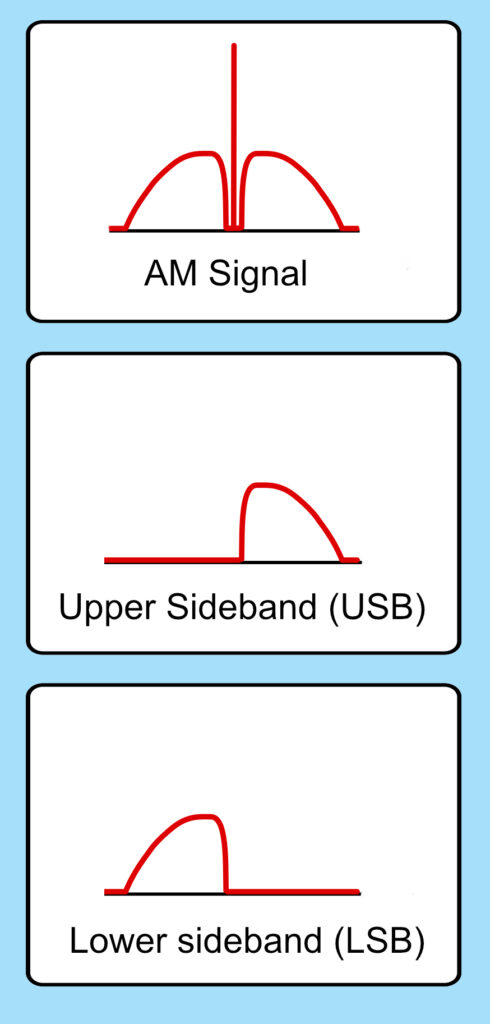What is “Sideband”, “Single Sideband” or ‘SSB’?
First of all, here’s what it’s not:-
- It is not, in the sense that we use the word ‘band’ (for example in the term ‘Citizens Band Radio’) a separate band
- There is no side band
- It’s not a set of different channels or frequencies (operators may use certain frequencies or channels, but that doesn’t make them sideband channels)
- It’s not magic – operating with SSB won’t make a poor antenna any better, for example
So, what is it?
Sideband is a mode or method of modulating a signal, just like FM and AM:-
- FM where the signal is FREQUENCY MODULATED
- AM where the signal is AMPLITUDE MODULATED
An AM signal is comprised of a carrier and an upper and lower sideband, looking like the top picture:-

In AM mode, the whole signal is sent – the carrier and both sidebands.
In sideband mode (the middle and bottom pictures), the transmitter sends only one side (the upper or the lower sideband) and omits the carrier.
The receiver is able to recreate the whole signal because each sideband carries all of the information required.
Because only one sideband needs to be transmitted, all the power can be used to do exactly that, making sideband a much more efficient mode than AM and FM. Typically, it is used for longer distance communication or ‘DX’.
Sideband is more complex to generate and decode. This complexity makes transceivers with sideband generally more expensive.
If you tune to a sideband signal on an FM or AM only transceiver, the signal will sound distorted and will usually be unintelligible.
If you want to use sideband, look for a radio that offers the Upper Sideband (USB) and Lower Sideband (LSB) modes.
These radios may tune across the same frequencies and channels as a radio with FM or AM only, or they may have wider frequency coverage, sometimes including the 10m Amateur Radio Band.
But remember: – sideband is not a set of frequencies or channels. It is a MODE.
